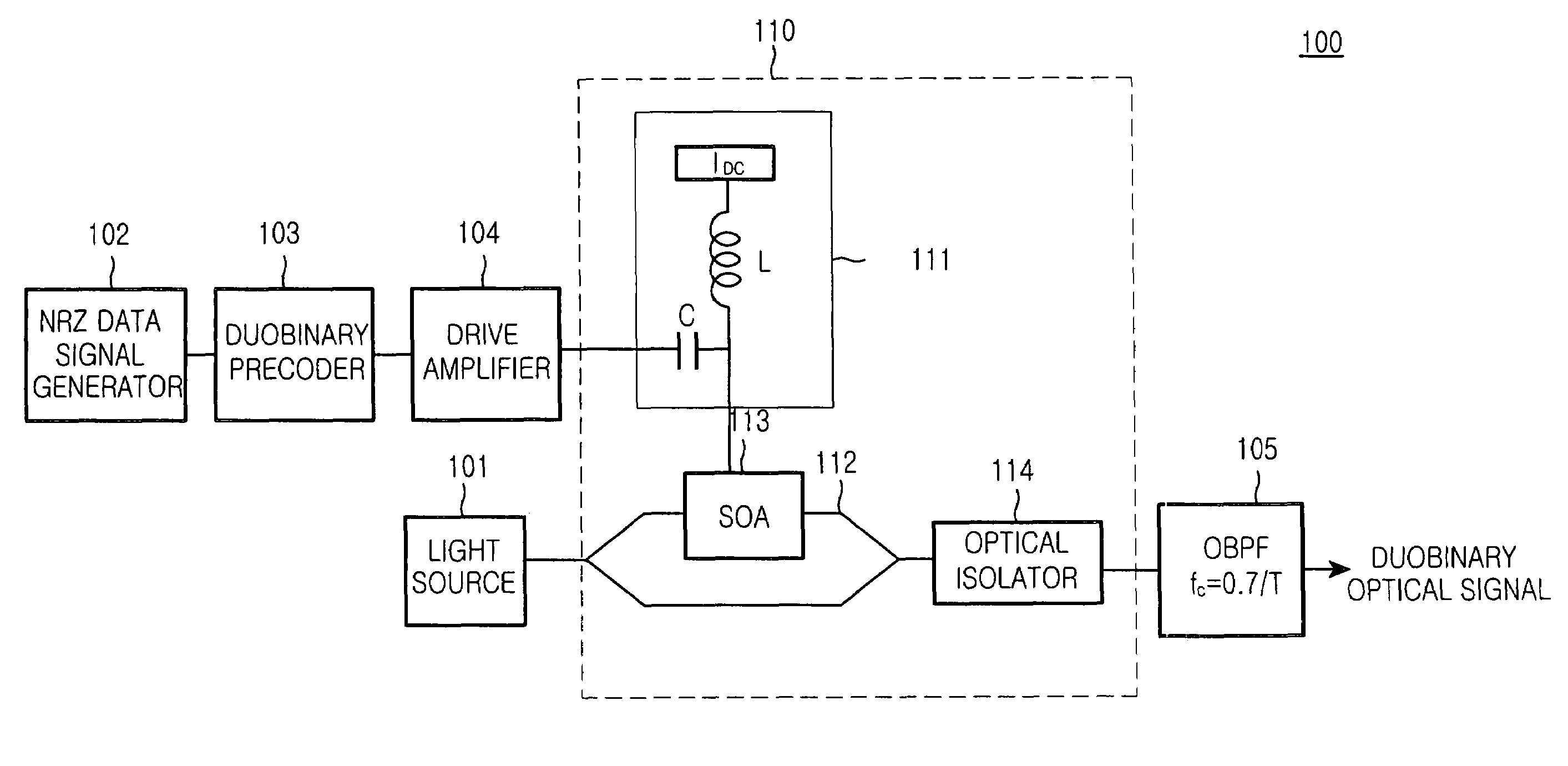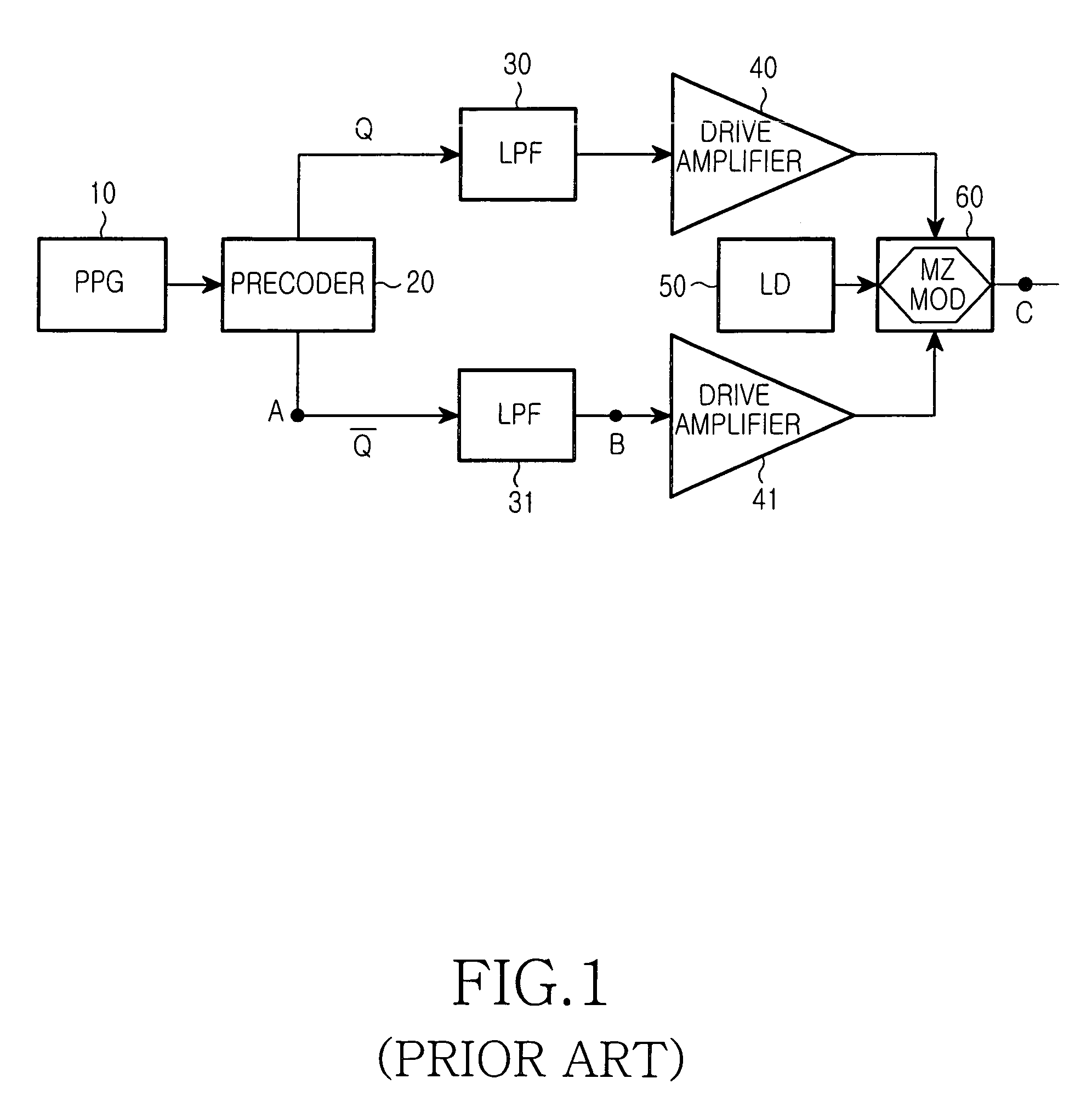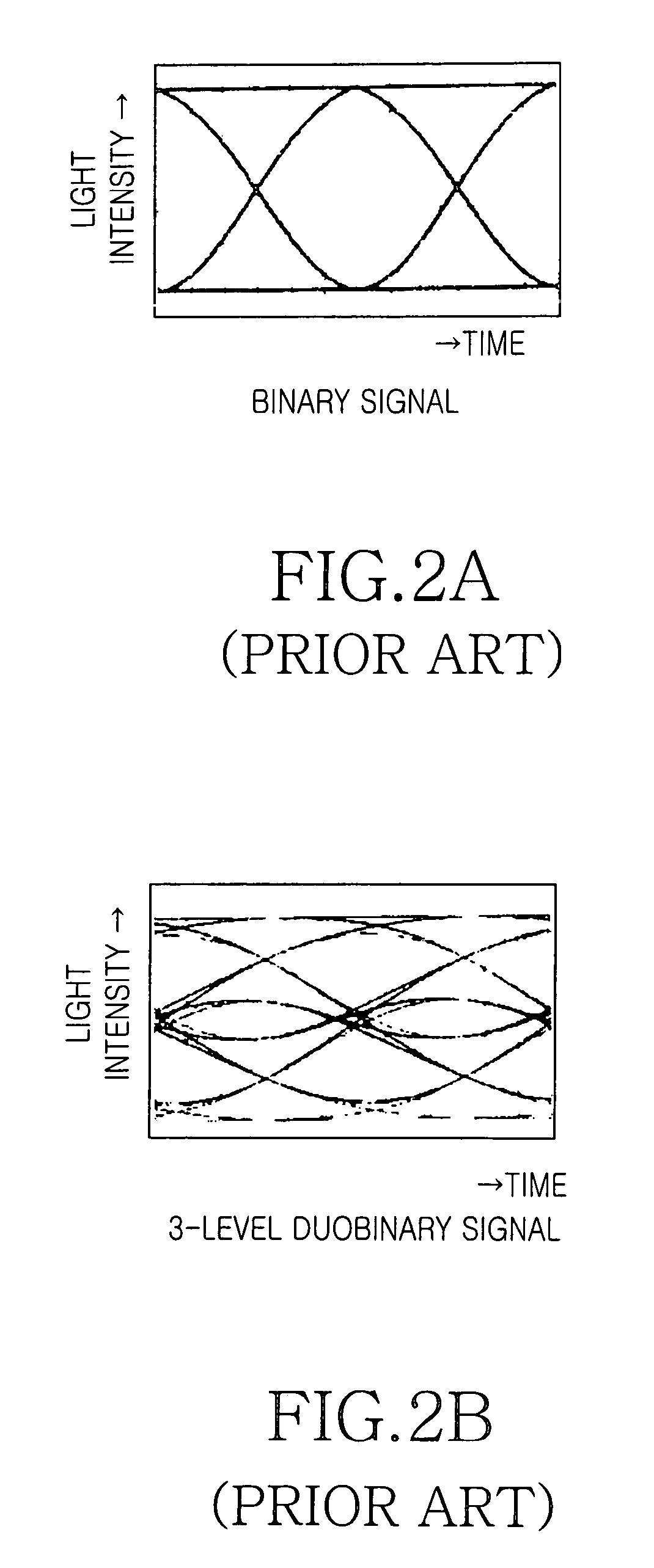Duobinary optical transmission device using at least one semiconductor optical amplifier
a transmission device and semiconductor technology, applied in the direction of electromagnetic transmission, transmission, semiconductor amplifier structure, etc., can solve the problems of limited transmission distance, interference and distortion, limited transmission capacity extension in optical systems, etc., to improve the non-linearity and dispersion characteristics of non-return-to-zero, and improve transmission. the effect of non-return to zero
- Summary
- Abstract
- Description
- Claims
- Application Information
AI Technical Summary
Benefits of technology
Problems solved by technology
Method used
Image
Examples
Embodiment Construction
[0027]Now, several aspects and advantages of the present invention will be described in detail with reference to the annexed drawings. In the drawings, the same or similar elements are denoted by the same reference numerals even though they are depicted in different drawings. In the following description, a detailed description of known functions and configurations incorporated herein will be omitted when it may make obscure the subject matter of the present invention.
[0028]FIG. 4 is a block diagram illustrating the configuration of a duobinary optical transmission device 100 using a semiconductor optical amplifier (SOA) in accordance with a first aspect of the present invention.
[0029]Referring to FIG. 4, one example of the duobinary optical transmission device 100 of the present invention includes a light source 101 for outputting a carrier wave; a signal generator 102 for generating a non-return-to-zero (NRZ) data or electrical signal; a duobinary precoder 103 for encoding the NRZ...
PUM
 Login to View More
Login to View More Abstract
Description
Claims
Application Information
 Login to View More
Login to View More - R&D
- Intellectual Property
- Life Sciences
- Materials
- Tech Scout
- Unparalleled Data Quality
- Higher Quality Content
- 60% Fewer Hallucinations
Browse by: Latest US Patents, China's latest patents, Technical Efficacy Thesaurus, Application Domain, Technology Topic, Popular Technical Reports.
© 2025 PatSnap. All rights reserved.Legal|Privacy policy|Modern Slavery Act Transparency Statement|Sitemap|About US| Contact US: help@patsnap.com



